You are currently browsing all posts tagged with 'building codes'.
PANORAMIC COASTAL VIEWS
posted on Wednesday, May 17th, 2017 at 4:07 pm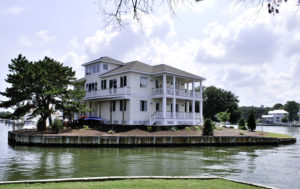
One unfortunate thing about the design of this house is that the tower is too short, regulated by a very severe zoning restriction. A 35-foot building height is really common in many ordinances where our houses are located. However, in Virginia Beach the way in which height is measured is very peculiar. For some reason, perhaps political, building height is measured to the highest ridge peak of the structure. Planners and architects know this is an unreasonably restrictive criteria, probably vulnerable to being struck down in a court of law if someone was willing to take the time to challenge it. There is no precedent for such a restrictive interpretation of building height, there is no rationale for it either.
The legal basis for limiting building height is historically to allow for sunlight to reach adjacent properties next door, and also to provide for air flow between buildings, dating back from the days of urban tenement structures. Whoever wrote the ordinance in Virginia Beach did not understand that a shadows on an adjacent property are not cast from the ridge of a pitched roof next door to it. Shadows are cast from the average height of the building mass, somewhere midway from the eave to the ridge. Norfolk boarders Virginia Beach to the west where its precedent for measuring building height is perfectly logical, completely consistent with the legal basis for height limit of residential structures. Its 35-foot building height is measured to the average height of the sloped plane of a pitched roof.
There is also no legal precedent to protect an adjacent property from a view across a next door property. Without going into the unenforceable of such a criteria suffice to say that it is almost impossible to block someone’s view from the ridge height of a pitched roof. The peak of a pitched roof is always above the line of sight of the occupied space of the house next door to it. On the other hand it is easy to imagine that an elected city council member could be badgered by an irate constituent who is worried about having a view blocked by the height of neighboring property. I suppose this is the origin of the peculiar way that Virginia Beach measures the height of residences in its jurisdiction.
Virginia Beach has many beautiful coastal properties for more and more imaginative designs to come. If it doesn’t change its peculiar manner of measuring building height new designs will continue to be less architecturally attractive and less exciting for the home owner’s than they could be.
This design has wrap around balcony porches on three sides, the porches are sheltered on each floor level. There is also a wonderful lookout tower on the third floor. This four-bedroom plan has two master suites. The main living area is on the second floor for maximum views for daytime spaces. It also has an elevator from the attached garage convenient to the Kitchen as well as access for anyone challenged by using the stair. The property lies at the tip of a peninsula at the entrance to boating canals to Broad Bay Island in Virginia Beach. It is an amazing property and fantastic privilege to be the architect for this true coastal house.
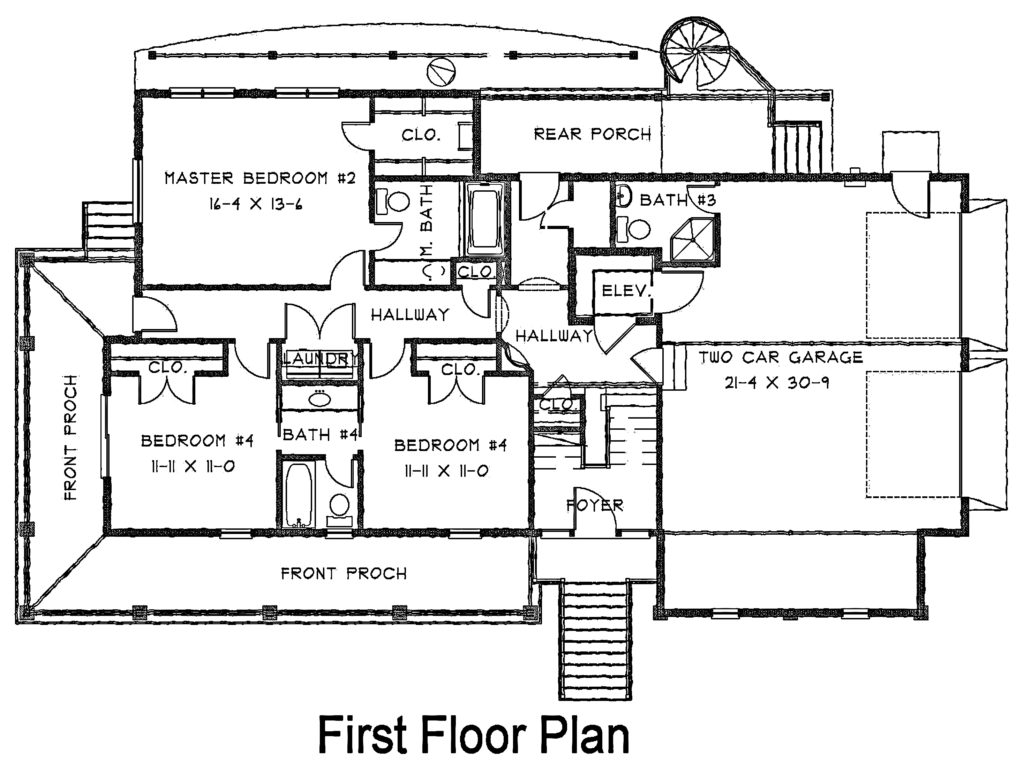
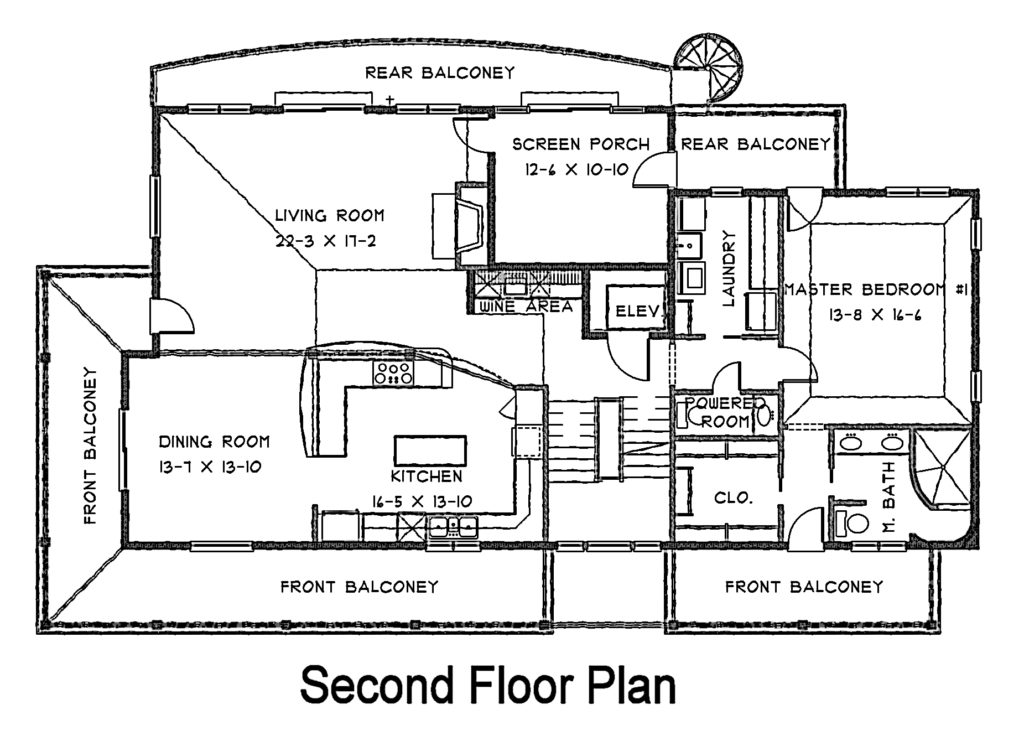
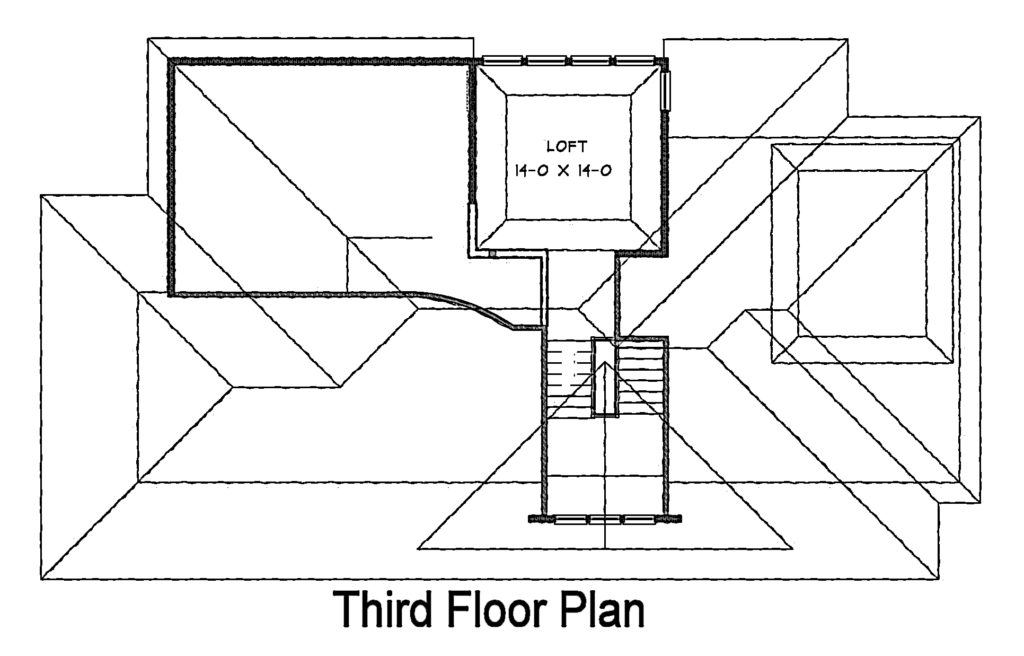
Tags: building codes, building height, coastal plans, restrictive, waterfront views, zoning
Adaptive Reuse – planner’s agenda for a rewarding project
posted on Saturday, September 24th, 2011 at 7:47 pmWhen the original use of a structure becomes obsolete or is no longer required, as with older buildings from the industrial revolution, architects have the opportunity to change the primary function of the structure, while retaining some of the existing architectural character that makes a building unique. The Captain George’s Restaurant in Williamsburg, Virginia is an example of a large adaptive reuse project. At the time it was purchased by the owner’s the prior use was as the Williamsburg National Wax Museum, 1986.
Among the most rewarding redevelopment projects are the conversions and reuse of existing warehouses, school buildings, offices and other types to apartments. Such projects are rewarding in the context of providing affordable housing in established locations of lifestyle convenience to the prospective residents: neighborhood shopping, public transportation, schools, recreational and cultural opportunities.
Such an opportunity is under consideration for the Kemps Landing School building in Virginia Beach, Virginia. 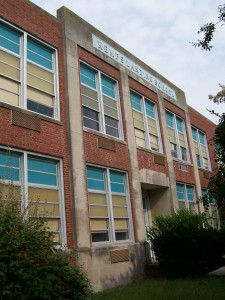
The current structure was built on the site of previous public schools for the Kempsville community. The old county jail was the first public school after the courthouse moved to Princess Anne in 1824, and remained the school location until the late nineteenth century when it was replaced by a frame structure which stood near the east bank of the Eastern Branch of the Elizabeth River. The existing two-story structure, completed in 1941, continued in use until it became part of the Historic Kempsville Area Master Plan, adopted in 2006.
On the agenda for project execution Virginia Beach City Planners are faced with three administrative tasks:
1. gaining neighborhood acceptance
2. adopting appropriate prescriptive land use regulations
3. establishing building and safety guideline standards within the spirit of the current building codes (if not the letter)
These challenges are “business as usual” for rewarding adaptive reuse projects.
The concern about gaining neighborhood acceptance diminishes with each successful undertaking. There really is no other way than to handle each conversion on a project by project basis. This is accomplished by open meetings and hearings with the respective neighborhood civic organizations. No new science here. Good intentions are eventually communicated and approved, albeit with conditions as derived from the meetings.
In the case of the other two challenges it is worth noting that in cities where adaptive reuse has been around for a long time guidelines an ordinances have been written to streamline the process. Take Los Angeles, CA for example. It has had an Adaptive Reuse ordinance and guidelines in effect since 1999. The latest edition was published in 2006. Provisions in The LA Handbook provide greater flexibility in meeting zoning and building code requirements for building conversions.
In regard to Zoning and Land Use Ordinances the LA Adaptive Reuse Ordinance includes: (1) many non-compliant conditions, such as building height, parking, floor area and setbacks are permitted without requiring a variance, as well as residential density requirements, (2) new mezzanines less than one-third the floor area of the space below are not counted as floor area, (3) discretionary review by the planning department is not a requirement.
In regard to Construction Codes the LA Adaptive Reuse Ordinance offers conditions in which the conversion of the original structure does not automatically trigger disabled access requirements in the residential use areas. Disabled access is still required in areas used by employees and that are open to the general public.
The virtues of Adaptive Reuse as an urban redevelopment strategy is compelling, including land conservation and reducing the amount of sprawl. Adaptive reuse is also related to the field of historic preservation. I think it would be energy well spent for planners to endeavor to compose the new Adaptive Reuse regulations that are useful for a variety of projects, rather than just the one that is on the table at a given moment in time. I am interested in your comments and stories of your own experiences.
Tags: accessible, adaptive, building codes, historical, landmark, Neighborhood, pedestrian, place, preservation, reuse, tax credits, urban, walkable, zoning


